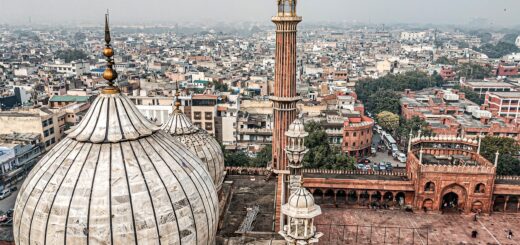Oaxaca’s Radish Night: carving fresh radishes for a unique holiday contest.
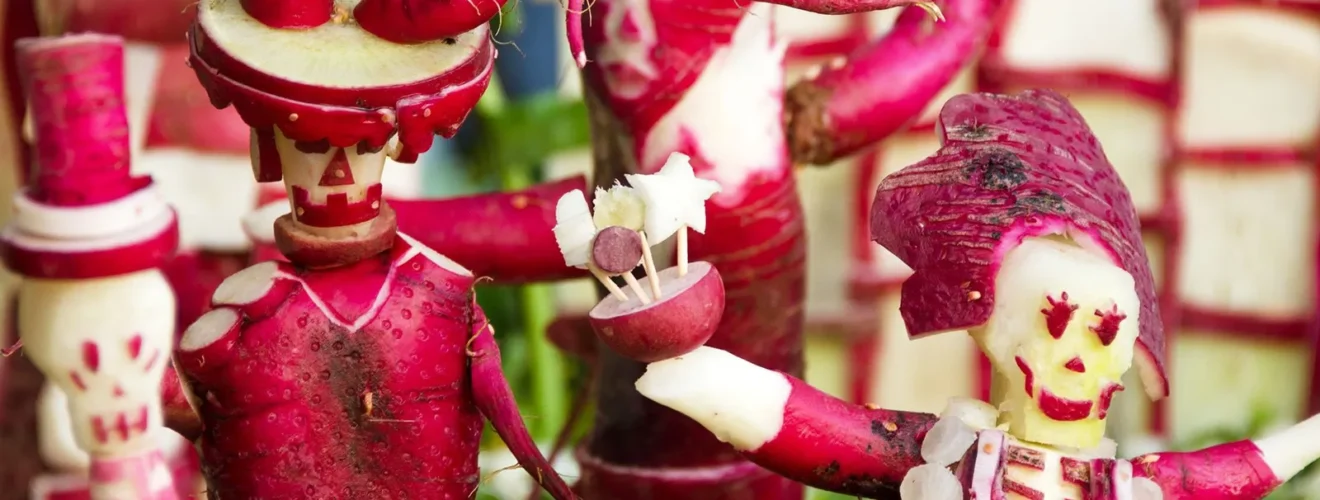
The radishes cultivated for La Noche de Rabanos (The Night of the Radishes) in Oaxaca, Mexico, differ significantly from the common small, thin, red and white radishes served in taco restaurants. Out of the 20 tonnes harvested before Christmas, mostly giant and overfertilized, the majority are not meant for consumption. Instead, they serve as unconventional canvases, hand-carved into intricate festive scenes for a unique competition. The annual event, now in its 126th edition, kicks off with the radish harvest on December 19th, just four days before judging final designs. Oaxacans armed with knives, shovels, picks, and gloves head to El Tequio Forest, facing challenges from this year’s intense droughts, rendering the ground more sand-like than soil.
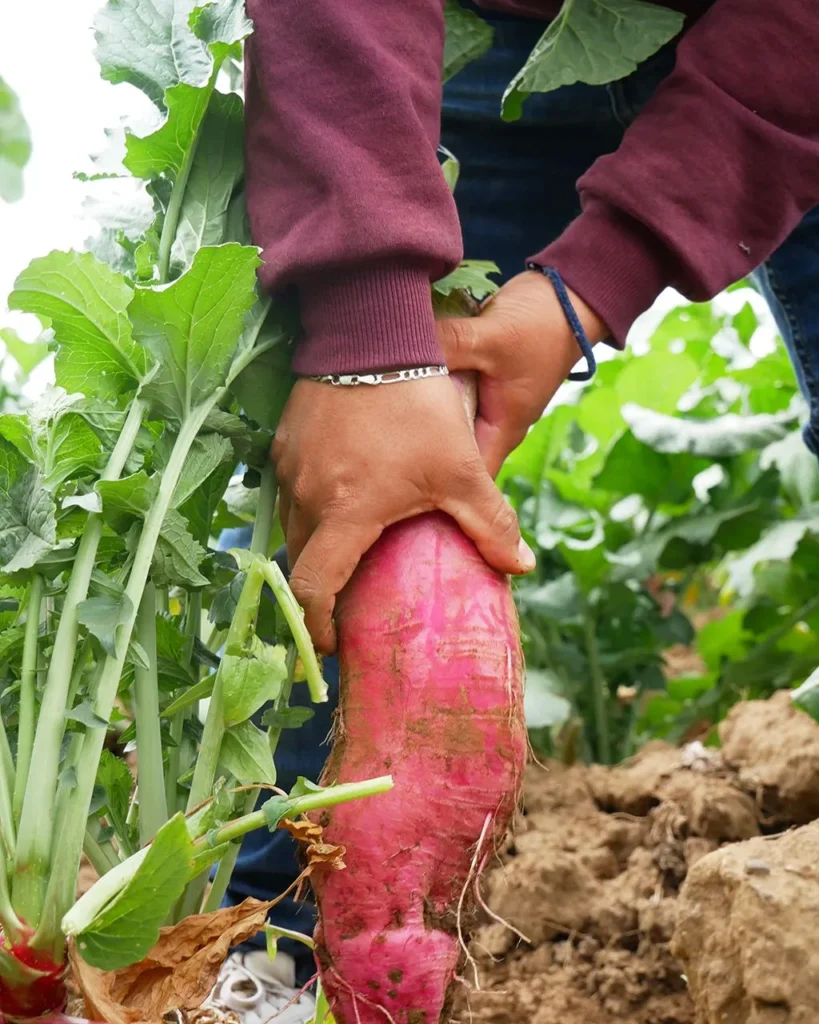
But just beneath the craggy surface around the forest’s northern tip, rows of ripe, bulbous radishes, which have become an indispensable part of Oaxaca’s festive calendar for more than a century, lie ready to be harvested.
They’re bigger, heavier and uglier than ever this year
“This year, they’re bigger, heavier, and uglier than ever,” exclaimed Senorino Martinez as we eagerly approached his field. For over 30 years, Martinez has overseen Oaxaca’s radish farming for the celebration. From just a few meters away, the crimson crowns and thick red stems of 20 tonnes of giant radishes were visible, breaking through the cracked ground.
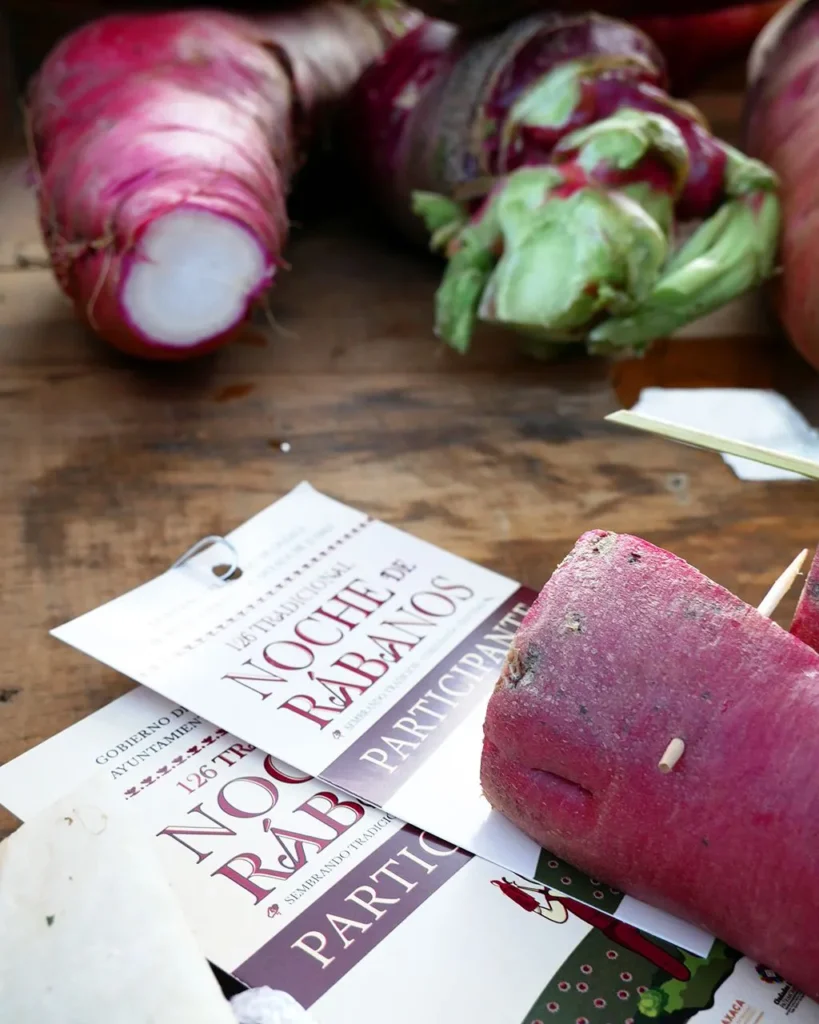
“The artisans will transform these into shapes and sizes you never imagined,” he remarked, gesturing towards the youngest farmer, Sergio, who firmly planted his feet around a protruding plant. Sergio began wrestling a bloated radish, the size of my forearm, from the soil. “There will be hundreds more in various shapes and sizes, more than ever this year to meet the demand of the Night of the Radishes,” Martinez explained, adding, “One of them might even bring in a significant profit.” While Mexico hosts renowned festive celebrations like Christmas Posadas and Three Kings’ Day, arguably none are as peculiar as Oaxaca’s La Noche de Rabanos. The tradition dates back to the late 19th century when market vendors in Oaxaca sought attention in the Zocalo, the city’s main plaza. To outshine competitors, they creatively displayed their seasonal produce, cutting fruits and vegetables into captivating arrangements in hopes of making additional sales.
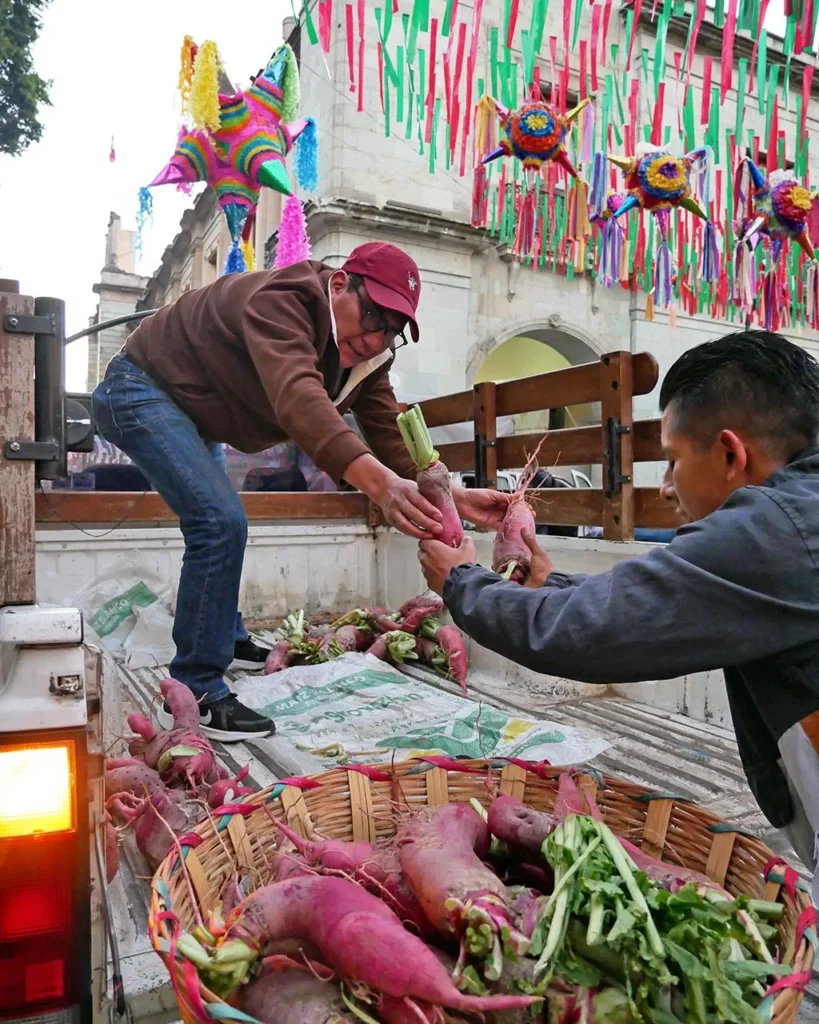
This marketing technique evolved into a ritual, subsequently transforming into a Christmas tradition. In 1897, the municipality’s president in Oaxaca officially announced a radish-carving competition for locals. Today, the cultural essence of the radish festival remains intact. On the morning of December 23rd, Oaxaca’s main plaza becomes an exhibition space. As wooden stalls are set up, competitors embark on the exhilarating process of constructing their designs at first light. By mid-afternoon, their sculptures undergo formal judgment, where even the slightest mistake can lead to disaster. Artistic pride, year-long bragging rights, and over 120,000 Mexican pesos (around £5,500) are at stake for the best designs. An esteemed panel of judges, comprising politicians, previous winners, and artists, determines the winners, who receive grand prizes awarded at 18:00. According to Saymi Pineda Velasco, Oaxaca State’s head of tourism, “The unique pieces created for the event represent the worldview of the Oaxacan people. It brings us all together in solidarity and is one of our most significant and beloved traditions.”
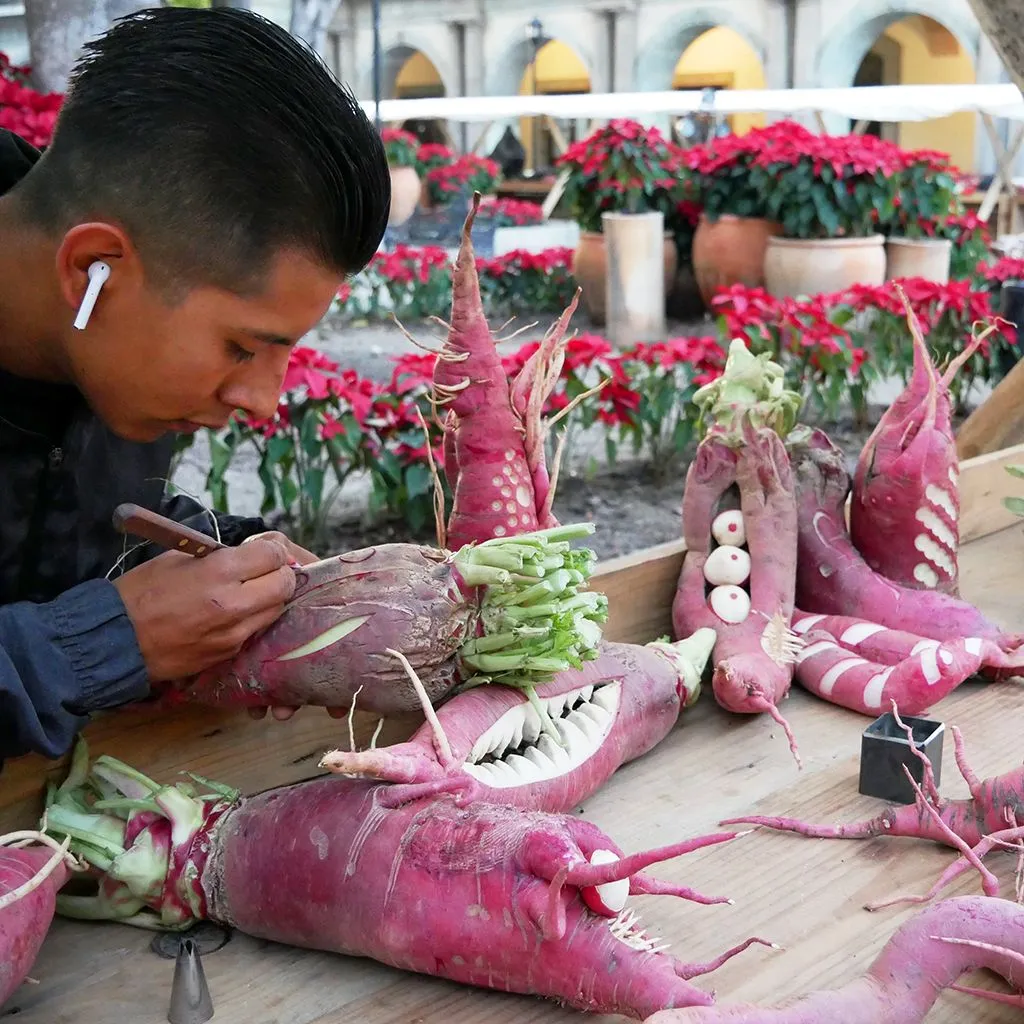
For regular participants such as Antonio Aquino, a young artisan consistently entering the competition since 2015, planning commences shortly after the conclusion of the previous year’s event. Disappointed by not securing a spot in the top three last year, Aquino began sketching designs for the upcoming competition on Christmas Day. “It’s crucial to consider what is achievable within the given time and to maintain the right level of ambition,” he emphasized.
Despite his extensive experience with the competition, Aquino remarked, “Experience is all relative.”
On the other hand, there are competitors like Serafin Munoz, who have taken part in nearly every edition throughout their lives. Munoz is considered a “competition legend” by Sol Figueroa, a local resident who has been attending the festival since her youth.
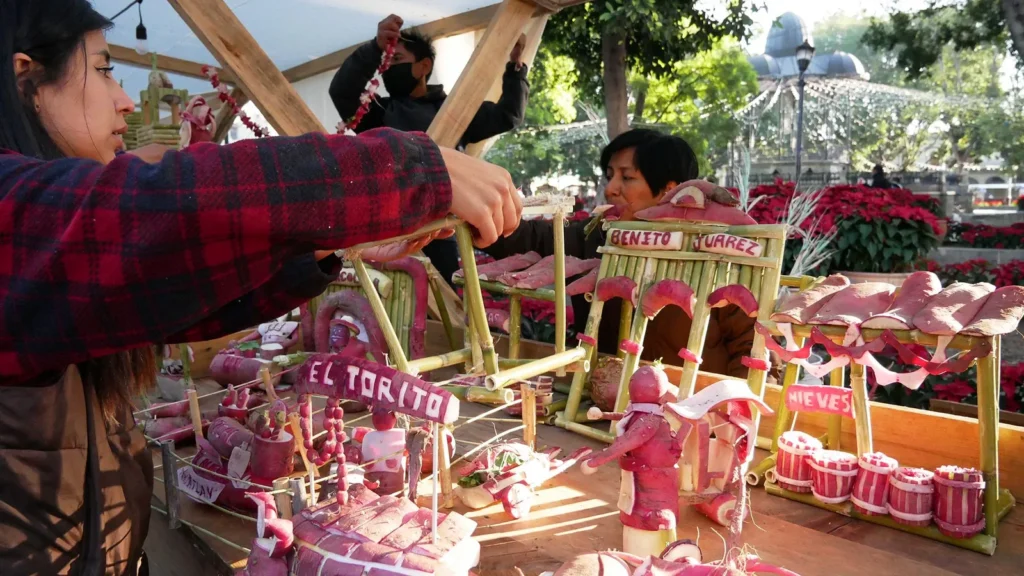
“He participated for his 55th consecutive year last year,” she shared with me, eagerly scrolling through selfies featuring various radish-based carvings. “He crafted a traditional Oaxacan brass band with intricate detail and creativity, yet only secured second prize, losing to Karla Vasquez’s depiction of a regional summer festival.”
Munoz recounted how he recalls “learning and watching” his parents carve designs in the 1960s. Now, following in their footsteps, he relies on the trusted assistance of his son and grandson to bring his ambitious designs to life each year.
Vasquez, aiming for a repeat of her 2022 success, expressed, “I’m equally nervous and focused as I was last year,” delicately reattaching a piece of radish to her design while her sister held her breath.
As night falls, brass bands lead joyful dances in rhythmic high-tempo across the Zocalo, with hundreds of locals and tourists joining in. Red and green fireworks illuminate the night sky, and young children ignite handheld sparklers amid the bustling crowds.
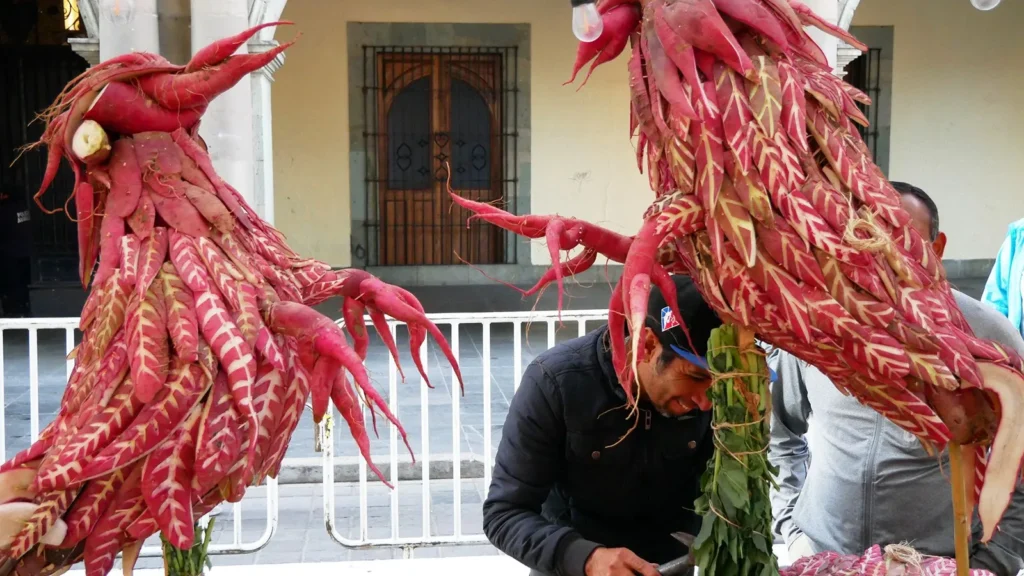
While bottles of beer are passed from person to person with cheers and smiles, other families carry their radish sculptures back home as their night comes to a close. The tireless work of Oaxaca’s artisans will be displayed on mantelpieces and outside homes for a few more hours before the white radish flesh begins to turn brown and the once-firm structures that were carved earlier in the morning begin to soften.
In 24 hours, they’ll be only good for compost, from which a new crop of radishes can grow the next year.
The winning design will be the talk of the town. And for those participants who were unsuccessful, early musings about how to take first prize next year will be underway before the Christmas feast begins.
Join more than three million BBC Travel fans by liking us on Facebook, or follow us on Twitter and Instagram.
If you liked this story, leave a comment.






